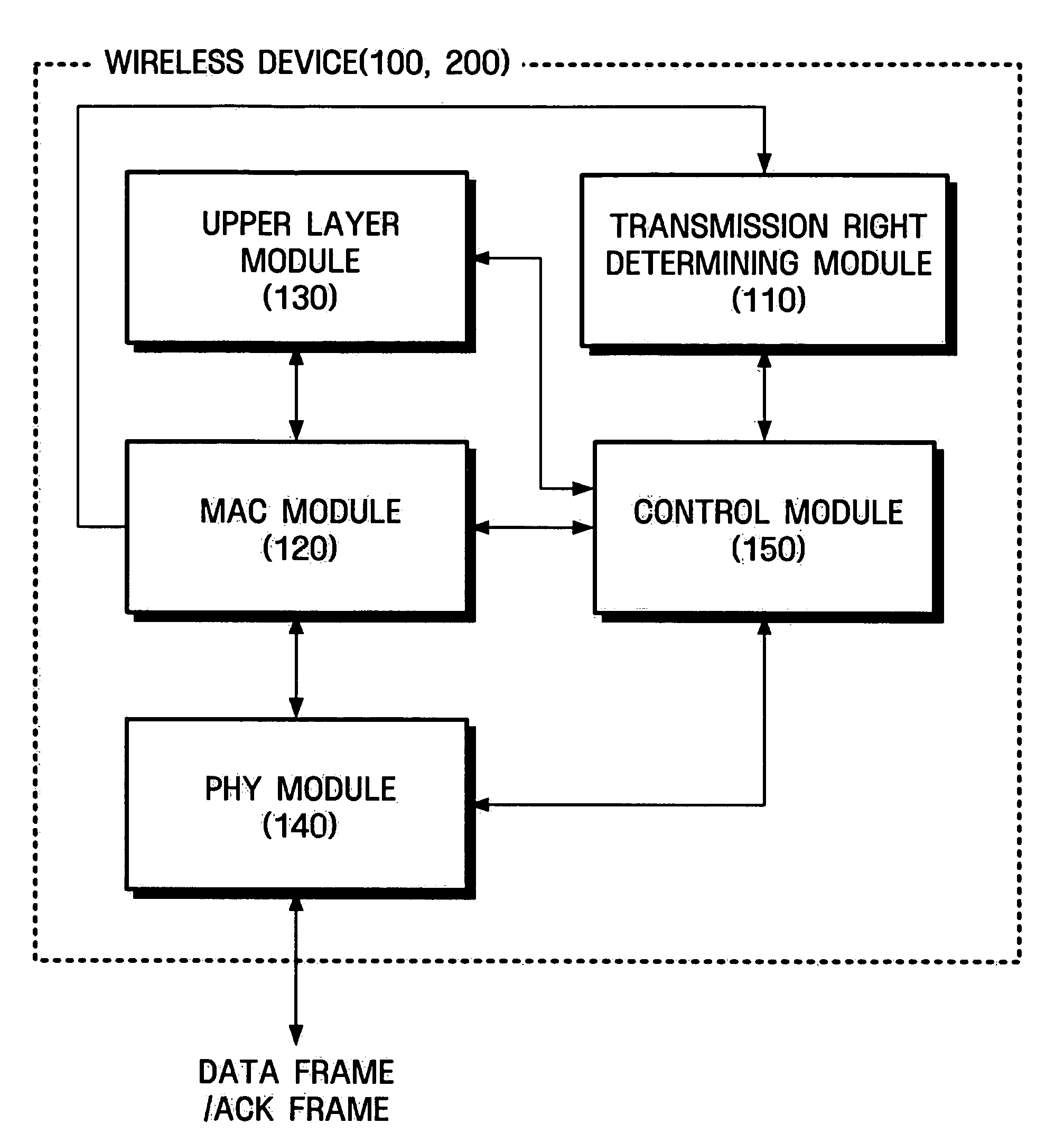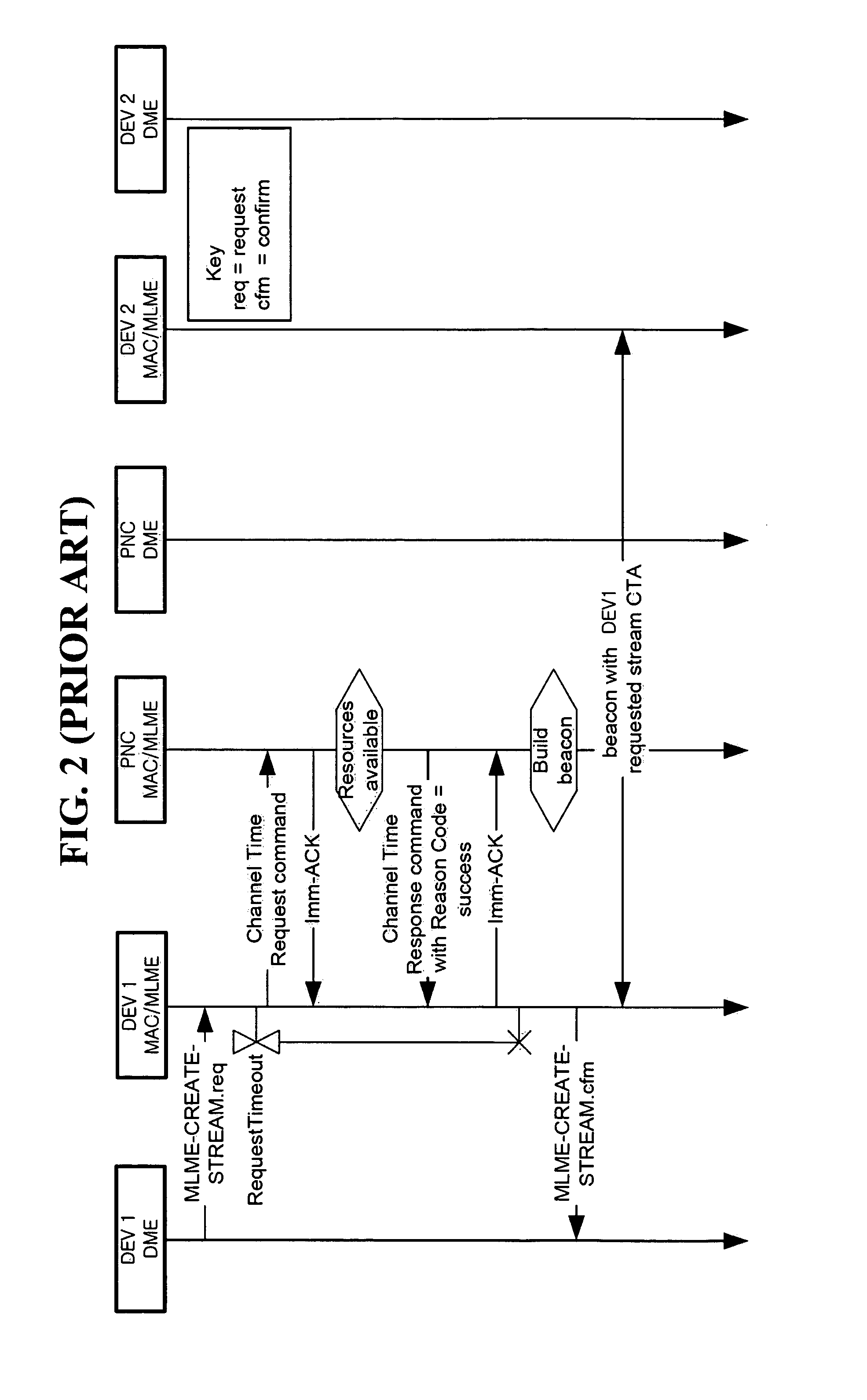Method for transmitting and receiving data bi-directionally during allocated time and wireless device using the same
a wireless device and allocated time technology, applied in electrical devices, wireless network protocols, network topologies, etc., can solve the problems of wasting channel time, dest dev cannot necessarily receive data, and mac still has several problems that need to be solved, so as to achieve efficient communication and efficiently support a bi-directional
- Summary
- Abstract
- Description
- Claims
- Application Information
AI Technical Summary
Benefits of technology
Problems solved by technology
Method used
Image
Examples
Embodiment Construction
[0038]The present invention will now be described more fully with reference to the accompanying drawings, in which exemplary embodiments of the invention are shown.
[0039]The IEEE 802.15.3 standard defines four different interframe spaces (IFSs): a minimum IFS (MIFS), a short IFS (SIFS), a backoff IFS (BIFS), and a retransmission IFS (RIFS).
[0040]The actual IFS (MIFS, SIFS, BIFS, and RIFS) values are determined by the characteristics of the physical layer. For example, when a 2.4 GHz physical layer is used, the IFSs are defined as shown in Table 1 below. Here, pPHYMIFSTime and pPHYSIFSTime respectively denote the time between successive frames and the receive-to-transmit (RX-to-TX) turnaround time. The PHY parameter pCCADetectTime denotes the clear channel assessment (CCA) detection time.
[0041]
TABLE 1MAC ParameterCorresponding PHY ParameterMIPSpPHYMIFSTimeSIFSpPHYSIFSTimeBIFSpPHYSIFSTime + pCCADetectTimeRIFS2*pPHYSIFSTime + pCCADetectTime
[0042]An Imm-ACK frame and a delay acknowledge...
PUM
 Login to View More
Login to View More Abstract
Description
Claims
Application Information
 Login to View More
Login to View More - R&D
- Intellectual Property
- Life Sciences
- Materials
- Tech Scout
- Unparalleled Data Quality
- Higher Quality Content
- 60% Fewer Hallucinations
Browse by: Latest US Patents, China's latest patents, Technical Efficacy Thesaurus, Application Domain, Technology Topic, Popular Technical Reports.
© 2025 PatSnap. All rights reserved.Legal|Privacy policy|Modern Slavery Act Transparency Statement|Sitemap|About US| Contact US: help@patsnap.com



